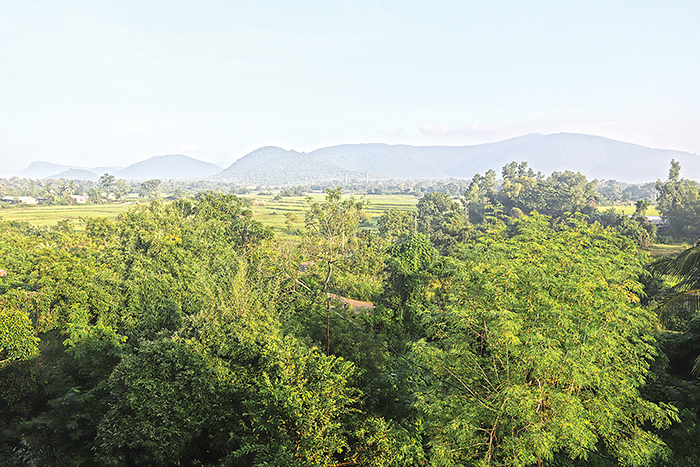
After the chaos and cacophony of the pujas, we desperately needed a break. The gradual lowering of temperature, the changing patterns of the skies from grey to clear blue beckoned to us – we chose an adventure amidst nature. About 25 km from Cuttack, the Dalijoda range and forests cast their magic spell on us. The plush homestay near the forest added that special touch to our experience. Welcome to Kila Dalijoda!
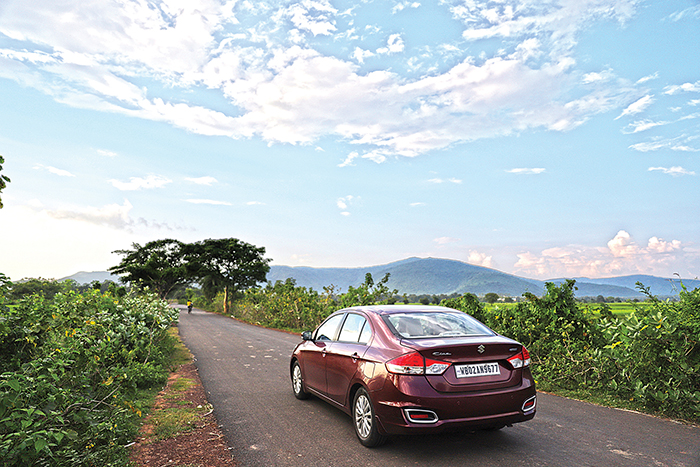
On way to Kila Dalijoda
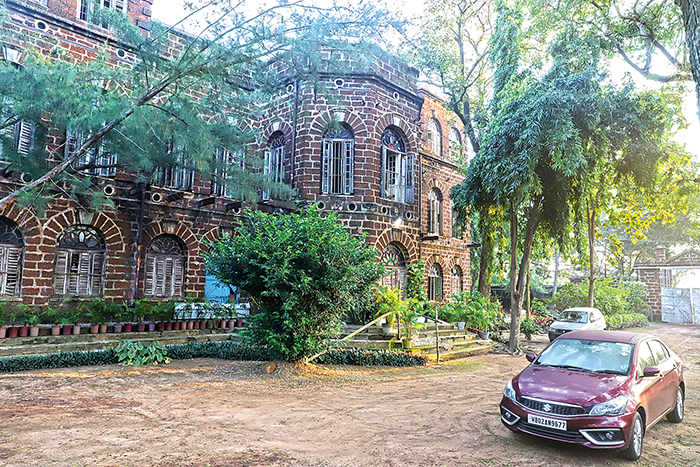
The grand facade of Kila Dalijoda
Route
On a pleasant morning after the pujas, Team WHEELS started off at 8 am from Vidyasagar Setu taking the usual route to Odisha by the Kona Expressway.
Enter the slip road on left at the extreme end of it to follow the left bend and meet NH-16 (NH-6). Head straight towards Kolaghat. Just before Kharagpur (trip 113 km from Vidyasagar Setu), take the left bend through an underpass towards Odisha. Continue to drive on NH-16, passing through Datan, Belda, Jaleswar, Baleswar crossing Bhadrak towards Cuttack. Slow down immediately after Nirghundi Toll-Tax and look for Manguli Chowk intersection with a flyover across the NH-16.
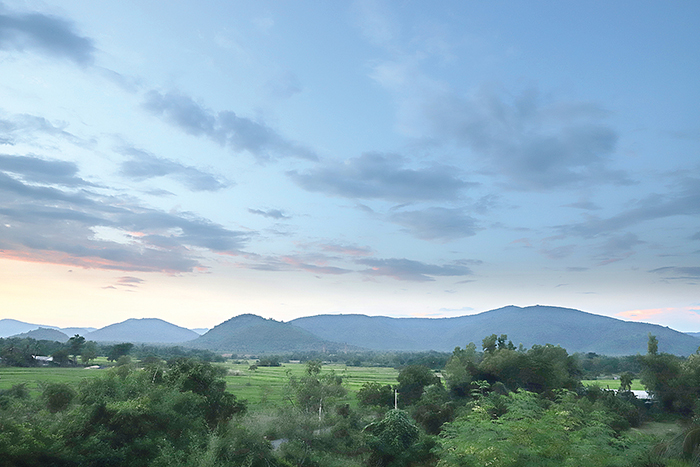
The captivating view of the Dalijoda range from the Kila terrace
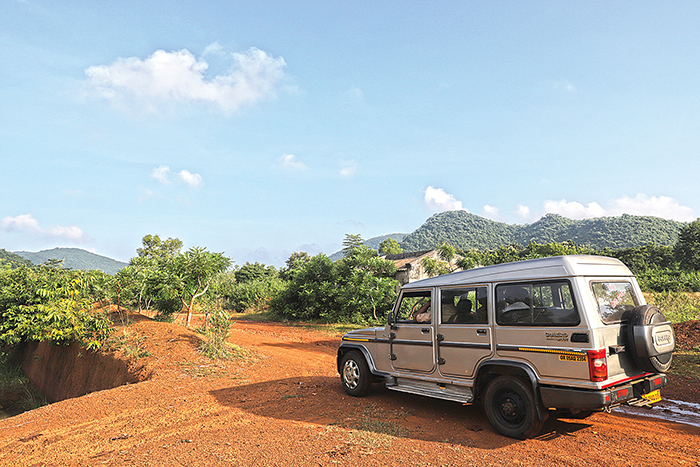
On way to Damdamani Forest
Take the road on left leaving the highway from Manguli Chowk (Kila Dalijoda is just about 15 km from NH-16). The road would take a left followed by a sharp right bend onto the flyover passing over the highway towards Dhenkanal. Proceed forward and turn right from Choudwar Kalinga Chowk towards Mangarajpur. Follow the main road to reach Kila Dalijoda – 11 km from Choudwar.\
Kila Dalijoda
After a smooth drive of 8 hours with occasional tiffin and tea breaks, we reached Kila Dalijoda in Mangarajpur at 4 pm. As we drove through the entrance, a gaggle of geese grazing in the grasslands caught our attention. We stopped in front of a beautiful two-storeyed mansion which appeared to be the miniature replica of a fort. On arrival, our host, Debjit Singh Deo, his wife Namrata, and their charming ten year old daughter Shreevidya gave us a warm welcome.

The Damdamani Dam soon to be transfromed into a bird sanctuary
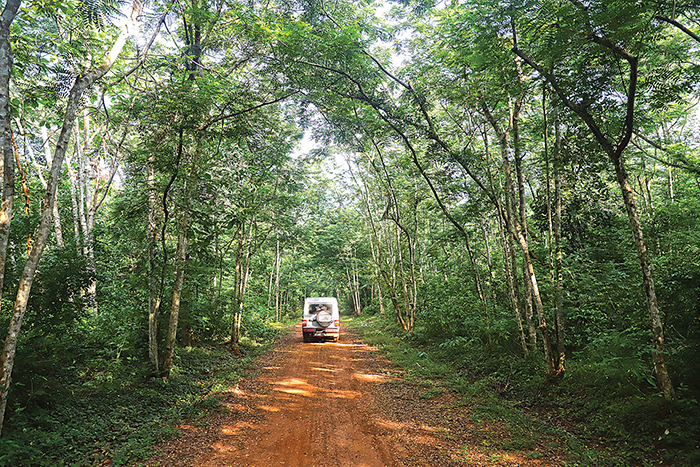
The forest trail
We tucked into an attractive spread comprising a rice meal with two veg-curries, a local fish-preparation and a mouth-watering dessert in a grand dining hall. Much to our surprise we discovered that the lunch had been cooked by Namrata herself with touches of both Odiya and Kathiawadi cuisine. The couple shared interesting stories of Kila Dalijoda while we ate. Post lunch, they showed us around the property. The hospitality charmed us.
The palace was an exclusive hunting resort of Jyoti Prasad Singh Deo, the then ruler of Panchakot of Bengal. We strolled around the mansion and were on time for the sandhyaarati at the temple of Bagalamata, the family deity of the Singh Deos, inside the walled compound.
The name Kila Dalijoda is given to the palace built amidst 4.5 acres of wilderness. The house-premises cover an area of about 40 acres within high boundary walls – which used to be electrified to prevent the entry of wild animals. Near the main gate we discovered a cowshed with 20 hybrid cows. Outside the compound we meandered through tall, unmown blades of grass undulating in gentle waves and arrived at a clearing with two waterbodies each on either side. We were told that the first two ponds are nurseries, where the fry are brought and raised. The third one is the stocking pond called Ranipukuri, where the fishes grow and the fourth one called Rajapukuri is the harvesting pond from were the fishes are taken to the markets for sale. These ponds have some very good stock of all types of Indian Major Carps of various sizes, here an angler can fish at leisure, try his skill and luck or just laze around and take a swim. The tourist can cook his catch in the eco-kitchen.
Evening aficionados may consider sitting in the rugged meadows by the ponds for bonfire story sessions over sundowners and barbeque. If you prefer the sound of silence, the vast open terrace of the villa awaits you. Simply enjoy the serene, sublime beauty of the forest with the Dalijoda range as the back drop.
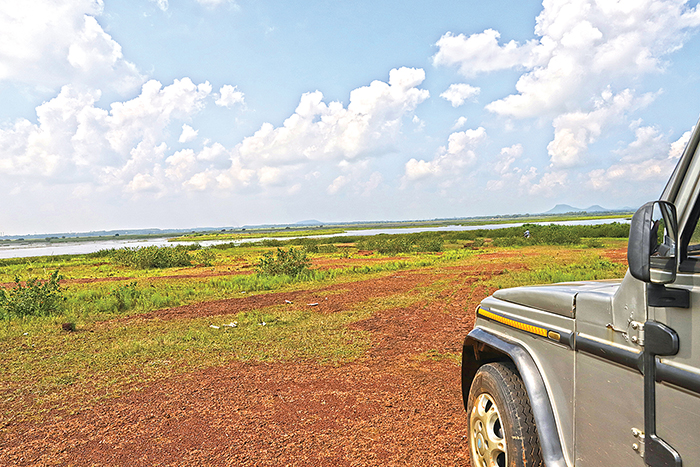
The sprawling Haripur Lake
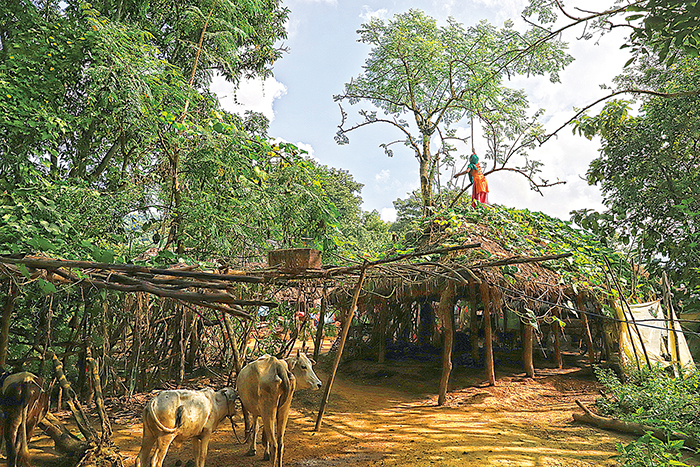
The self-sufficient tribal life – Banjhiama
History
In the evening, sitting in the lavish drawing room, Debjit and Namrata narrated interesting anecdotes of their families to us, over tea. The Singh Deo family is considered one of the most ancient families of pre-Independence India, with a well-documented lineage dating back to as early as 81 AD. This 1900 year old heritage belongs to the erstwhile royal familiy hailing from Panchakote Rajbati of Kashipur in Purulia, West Bengal. Kila Dalijoda or the Rajbati (palace) of Mangrajpur was built by Raja Jyoti Prasad Singh Deo, the great grandfather of Debjit Singh Deo, in the year 1931.
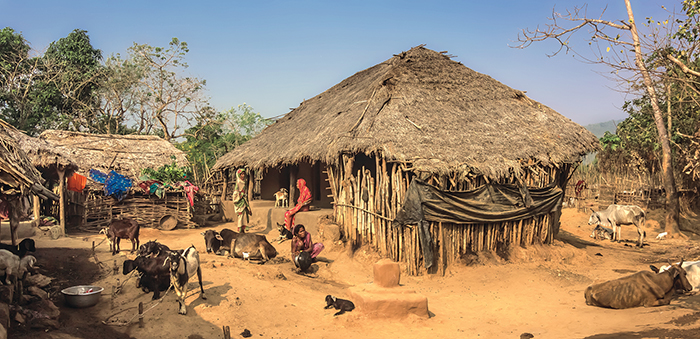
Simplicity at its best – Banjhiama
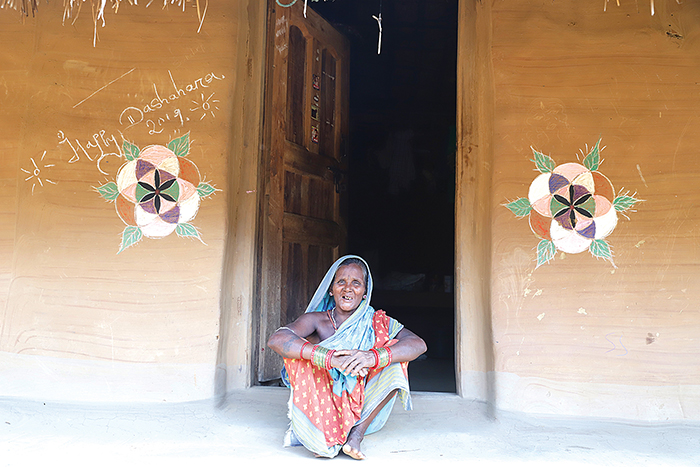
A tastefully done up tribal hut – BanjhiamaI
n pre-Independence India, there were several coal mines in Bengal under the Singh Deos. The British took these mines on lease from them. The sudden upsurge in income led to a major amelioration of living standards of Raja Jyoti Prasad Singh Deo. He immediately splurged on buildings, cars and weapons and developed a passion for tiger-hunting. Since tiger-hunting in Bengal was a difficult proposition, he approached the king of Talcher in Orissa for help. The king helped him buy the land, the forest comprising 4563 acres of reserve forest and 11,000 acres of non-forested land in 1931. It was then that the house was built and the entire property was endowed in the name of the deity and Raja Jyoti Prasad Singh Deo set off on his hunting spree.
Debjit says, “My great grandfather came to this palace every year during the festival of holi along with his entire troupe of 40-45 members which included gun-cleaners, doctors, drivers, musicians, dancers and helpers. He came to Nirghundi by train and reached the palace on elephant-back. During his stay, he used to engage in hunting and partying. Just before the festival of rath yatra, he would move to Puri and return to Purulia from there. The rest of the year, the house was run on minimum staffing. This tradition continued for the next three generations (1933-72).
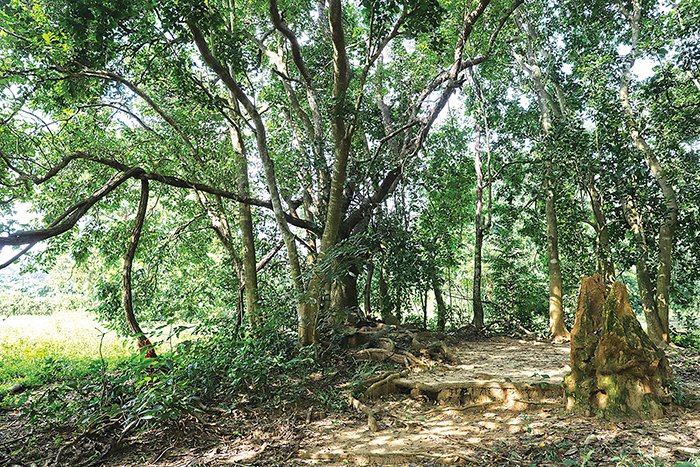
The banyan tree for invoking spirits – Banjhiama
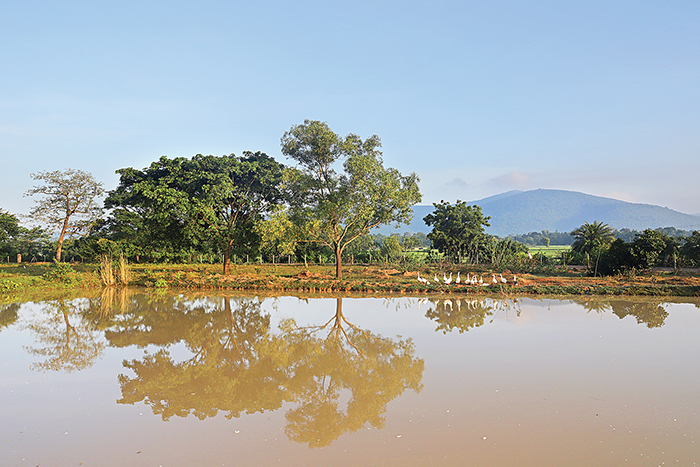
The geese enjoying by the enchanting Rajpukuri
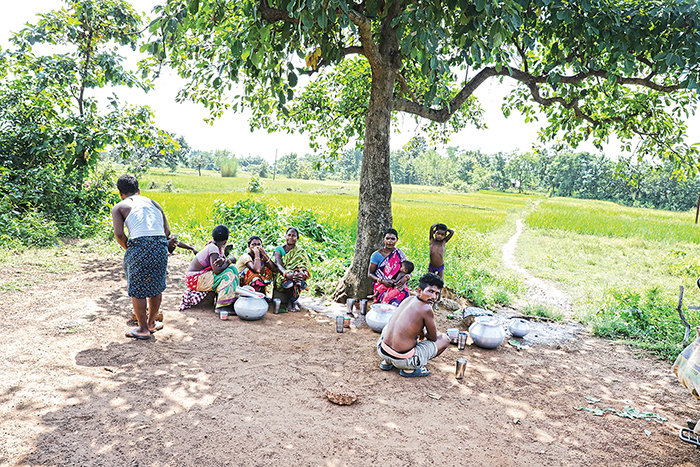
Tribal women selling local alcohol
In 1972, with the enforcement of the Indian Forest Act, the Singh Deos lost rights to the reserve forest and hunting was totally banned. At the same time, the coal mines were also nationalised (1973). By the 80’s, the family had to give up its lavish lifestyle and the house was left in the hands of a caretaker, till 2004”.
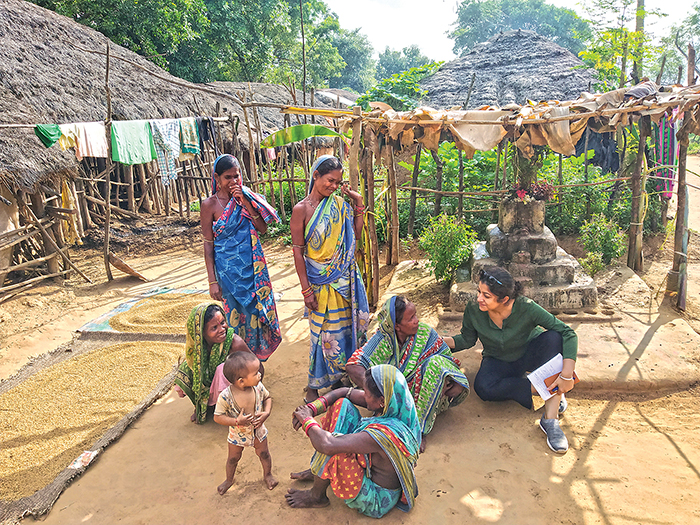
Family time at Banjhiama
In 2004, Debjit Singh Deo, the only heir to the property, who worked for a tea-company in Ooty, gave up his job to take charge of the huge family property and thus began the work of resurrection of Kila Dalijoda to its former glory. After successfully navigating tremendous upheavals, Debjit and Namrata (also hailing from a royal lineage), eventually opened the homestay in 2012. The 4000 sq ft lavish mansion has mostly hosted European guests and been listed in the Lonely Panet guidebook as a Starmark Destination in Odisha in 2017.
The royal Kila-kitchen
On one side of the Kila gate was built an outhouse for servants, the ruins of which can still be seen. On the other side was the special kitchen of the royals. It was in this kitchen that the deer hunted down by the kings were deskinned and hung for drying. Once dried, the meat was cut into pieces and pound into a fine powder and stored in containers. The king would carry the dried deer powder to his home town, Kashipur. This special condiment was then added to his favourite dishes especially those served to his guests. Today, the kitchen is in shambles.
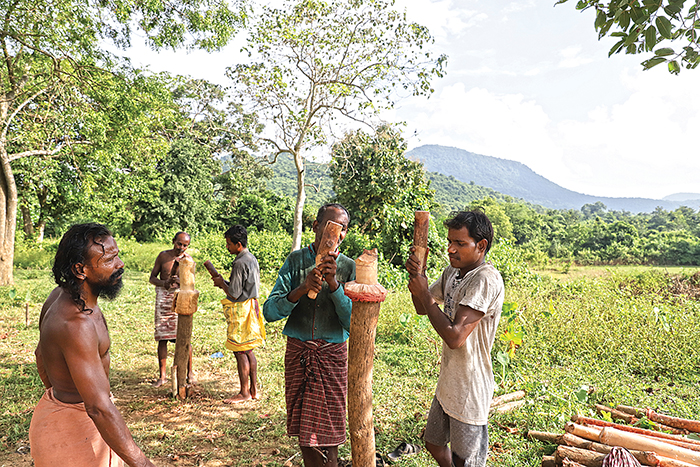
Making of the bark-cloth
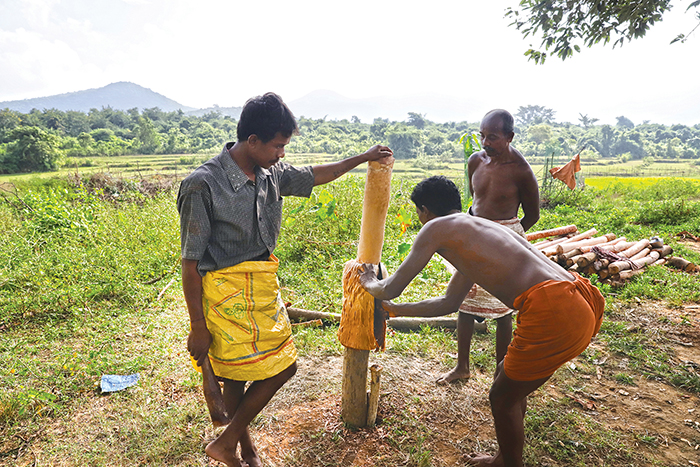
Making of the bark-cloth
As night fell, we could hear jackals howling at the far end of the Kila. Rice and roti, farm-fresh vegetables cooked to perfection, delicious mutton curry and a unique mouth-watering dessert called arisa pitha made for a wonderful dinner. We had a whole list of activities planned for the next day, so we retired early to bed.
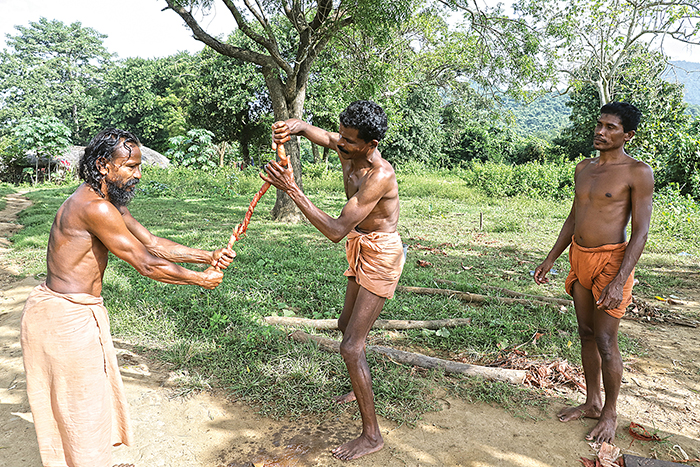
Making of the bark-cloth
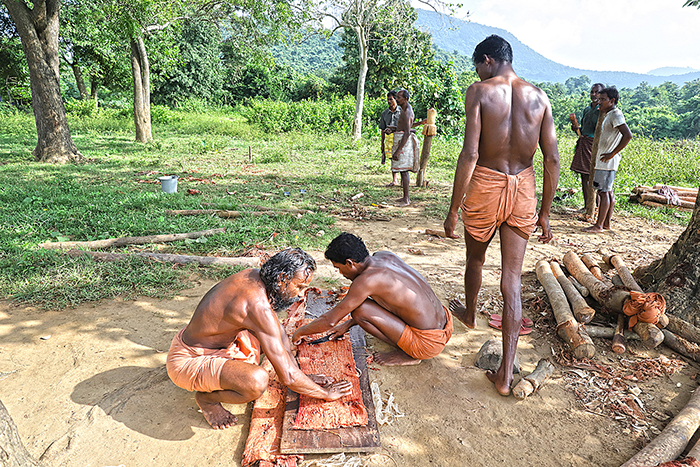
Making of the bark-cloth
Damdamani Forest
Early next morning at about 6 am, after tea, Debjit took us on a forest trail in his Bolero. We drove almost upto the foothills, crossing tiny villages, to enter the Dalijoda Reserve Forest – just 3 km from the Kila gate. We marvelled at the beautiful avenue formed by the lush green trees on the narrow red laterite pathway.
The quietness of the morning drew our attention to the merry chirping of birds from the tall trees all around and light filtering through the tree tops. We arrived at the temple of Bono Durga or Damdamani after a 4 km drive through the woods.
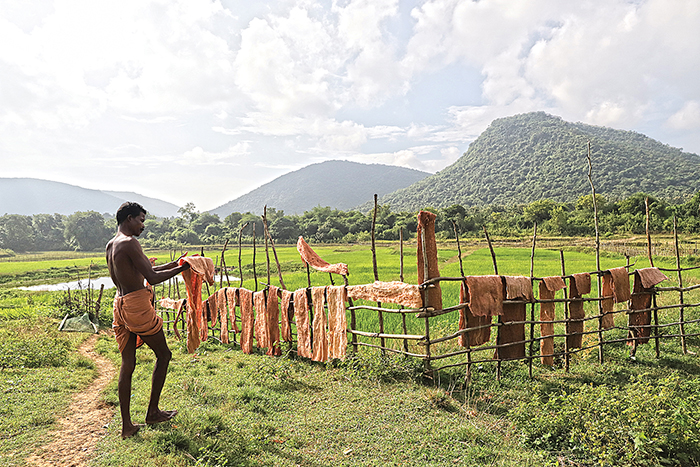
Making of the bark-cloth
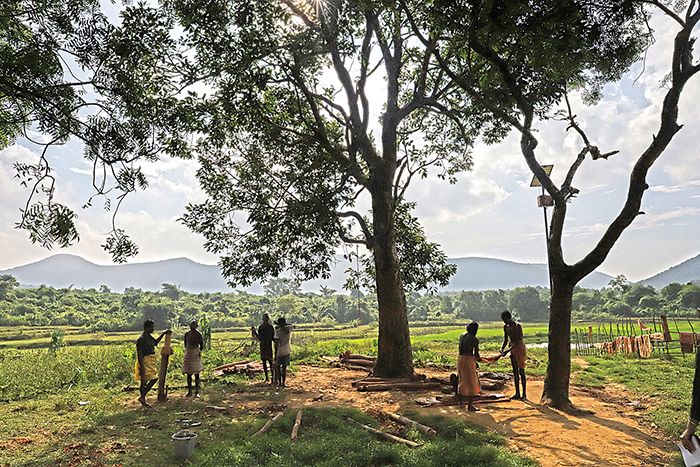
Making of the bark-cloth
Damdamani Dam
Driving a few yards from the temple we halted in front of a reservoir surrounded by hills on all sides across which a beautiful dam is being constructed. Debjit wishes to transform this waterbody into a bird sanctuary. He expects a large number of migratory birds to visit in winter.
Continuing our trail into the forest, we were taken by surprise on seeing a couple of towering mango trees. We kept moving through the elephant corridor, sniffing the aroma of wild tulsi and watchful of fresh elephant dung, a clear indication of their presence in the area. There are 23 elephants in the residential herd and a few migratory herds, we were told. It is always the latter that gets into man-animal conflict with the tribal villagers and never the residential ones. Many tribals were seen carrying firewood from the forest. The forest is a rich conserve of cashew, eucalyptus, mango, teakwood and bamboo.
Banjhiama Tribal Village
After a good 11 km drive from the Kila, we came to a halt in an open space. Debjit led us to a tiny picturesque village of the Sabar tribe called Banjhiama. The Sabars are one of the 63 registered tribals of Odisha. In Banjhiama, there are 18 low mud houses adorned with modest verandahs and enormous courtyards. We were excited to see the old fashioned husking lever known as dhenki in operation.
There is a small pond which attracts elephant herds during peak summer. Looking at the number of black goats, one can easily tell that goat farming is their primary occupation. The government has provided each household with a solar panel which can support three lights and one fan. IMFA (Indian Metals and Ferra Alloys) has also opened a school for the tribal children in Banjhiama.
The influence of the Sabars on Hindus dates back to the times of the Ramayana, where Lord Rama was offered a half-eaten guava by a Sabar lady (Sabari). The Hindu God, Jagannath of Puri is basically the main deity of the Sabars. The Hindu influence is evident from the Tulsi bedi in front of every hut. At one end of the village is a huge banyan tree where the village head invokes spirits in times of need.
Another tribe, the Malhars, can also be seen from time to time crossing the forests and villages. They are nomads or gypsies who stop at the villages only to drink water.
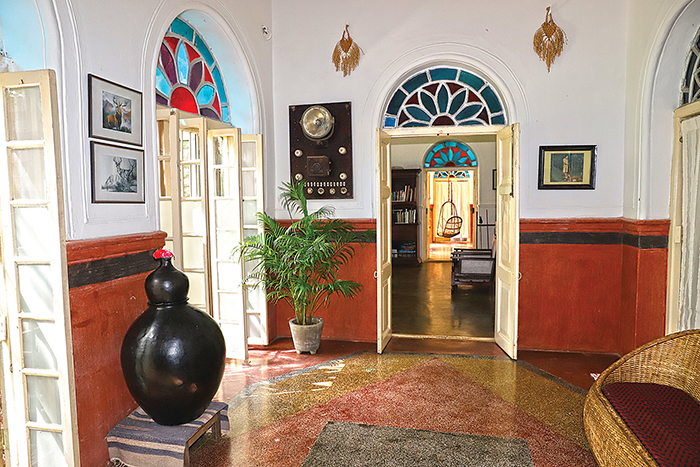
The search light the gun-stand at a distance the paintings on the wall are evidences of the kings love for hunting
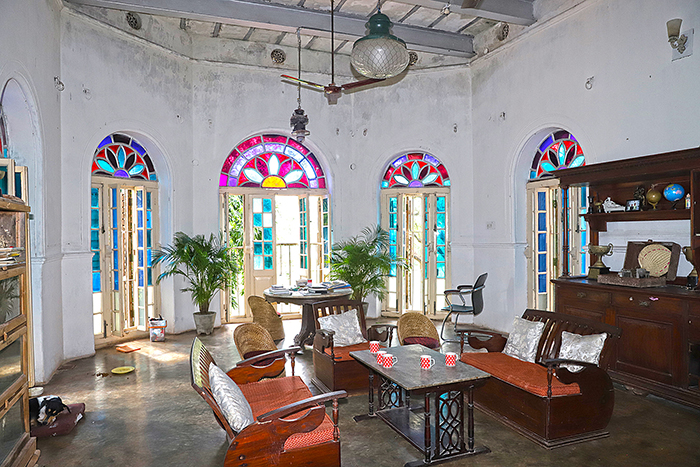
The living room boasting an old world charm
Making of Balkal
Far flung from Mangrajpur, at Jorandha village near Dhenkanal, is the ashram of hundreds of semi-clad monks practising a new religion called Alekh Mahima. The monks have thousands of followers. They survive on alms offered by their devotees. The monks are clothed in the bark of trees (balkal).
We watched as the disciples removed the barks of a tree called ‘Tumbi’, squeezed them to remove the water, spread them open to peel off the layers and finally dried them on fences under the sun to make the holy wear. These barks can be worn for 6-8 months at a stretch. We were lucky to witness this interesting feat.
Standing amidst the strong tulsi scent pervading the atmosphere, the bright sunlight and volumes of oxygen, our growling stomachs reminded us we needed to return to the Kila. Waiting for us at the breakfast table was Namrata, with cans of fresh cow milk and a bottle of honey, fresh fruits and cereal. We then had an interesting dish of steamed dumplings with potato and green peas filling, wrapped in turmeric leaves and served with coconut chutney. The subtle aromas tempted us to ask, like Oliver Twist, for more – more than once!
Haripur Lake
Post breakfast we went on another trail, towards Haripur Lake. It is a huge reservoir about 17 km from Kila Dalijoda – Debjit is getting it ready for boating. On our way back from Haripur, we stopped at the house of a tribal artist to watch his skill in painting on dried palm leaves. The beautifully painted bookmarks caught our attention and we immediately purchased them from the artist – as treasured souvenirs.
We returned by 1 pm for a lip-smacking rice-meal which included dal, sabzi and a special fish. We were served ras bara, a large flattened pantua served in a flavoured milk base.
After an interesting innings amidst the pristine wilderness, it was time to return to the urban jungle. As our Ciaz roared into action, we felt a distinct reluctance to leave. A tiny bit of our hearts was going to be left behind with this lovely family and their grand nest. We felt privileged, as if we had been allowed a rare glimpse into something essentially pure and sweet and as yet untouched. With fervent promises to be back very soon, we bade good bye to the Singh Deos.
The smooth drive back to Kolkata did not throw up any surprises. With few breaks and good weather conditions, we made it to Kolkata in just a little over 6 hours.
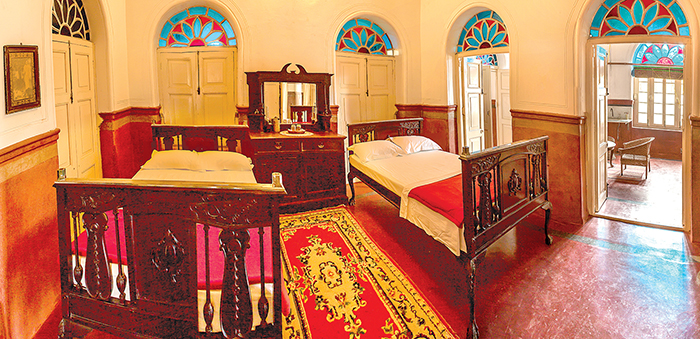
Elegant Heritage Suite
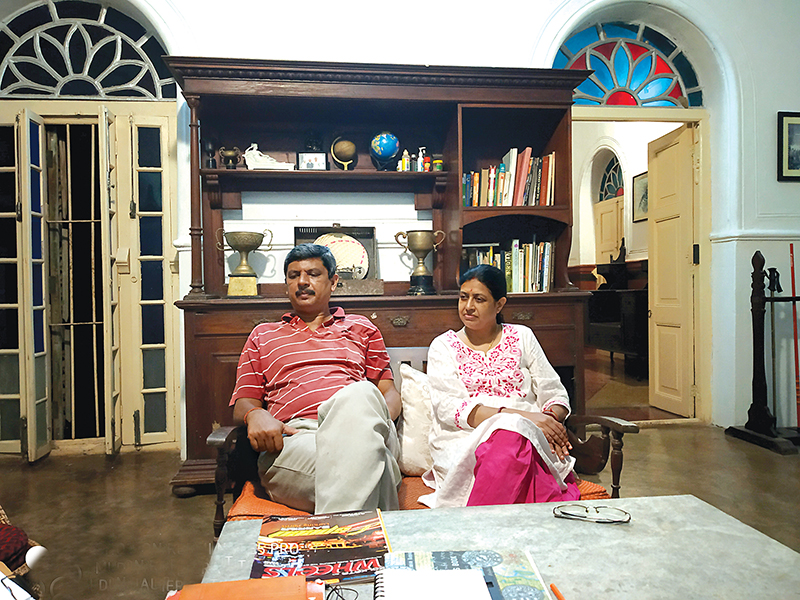
Debjit and Namrata Singh Deo
Accommodation
Replicating the European style of architecture, Kila Dalijoda is a unique mansion built in laterite stone. The arched doors and windows accentuated with coloured glass panes are charming. The mansion boasts some elegant period furniture, artefacts and fittings such as a water softening machine, search light for hunting, watering system and self-generating electricity.
The family having abandoned the property in the late 80’s, Debjit and Namrata, after a long gap of 25 years, have moved in, and with great effort and taste are trying their best to bring back for the discerning, the vintage style of the mansion with the opulence of modern amenities.
There are two non-ac 'Heritage Suites', beautifully done up with antique furniture and fittings. During summer, the rooms are kept cool in the traditional style using khus (straw) curtains. In addition to the bed rooms, there is an extended sitting room with a pretty coffee table as centrepiece. The attached washrooms are a joy as they are very spacious. There is an interesting area in front of the bathrooms which allows in plenty of light and natural breeze. It has a platform meant to be used for oil massage.
Additionally, there are two rooftop cottages much smaller in size, which also have a separate sitting room with a classical look and feel. The design and décor of the rooms are befitting of the royalty, the sense of a lost era and its old world air that gives this place its particular charm.
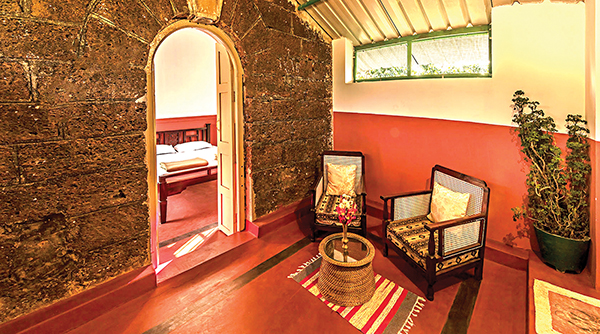
The chic coffee table at the attic room
Best Season
Since Kila Dalijoda is surrounded by forests and villages, electricity can be an issue. The house becomes too warm and uncomfortable during summers (April to June). So the best time to visit would be between October and March.
Food
This heritage homestay is a great destination for those who love Indian cuisine. The family excels in serving local and traditional family recipes, all cooked in an eco-friendly bio gas kitchen. You will be spoilt by their farm to table dining with organically grown vegetables and fruits, fresh catches from their own ponds, milk products from their home dairy farm and pure honey from the forest. Being allowed to share mealtimes with the family gives it that special touch of warmth.
Following family tradition, the Singh Deos refrain from serving chicken and chicken eggs. If, however, bird-meat is your personal staple or indulgence, you may try out the farm quail and quail eggs, which happen to be a delicacy here. And if you are lucky, you may get to try duck eggs and meat, but only in winter.
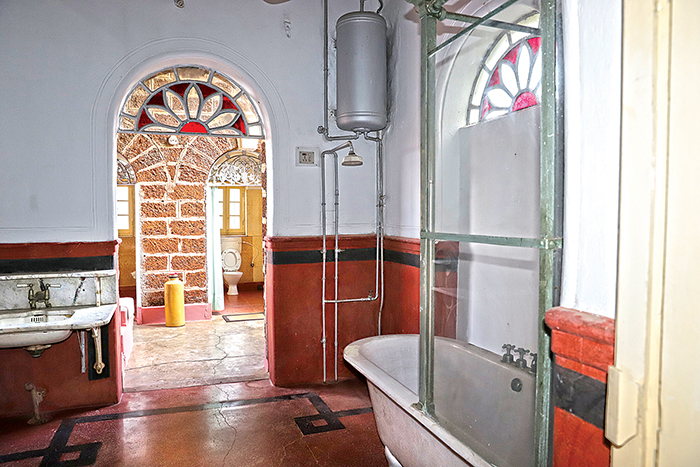
The vintage bathroom fixtures
Activities at Kila Dalijoda
? Forest safari – Guests can trek on foot, bicycle or drive in an SUV to the Damdamani forest, where the King would watch and shoot his choice game.
? Tribal village tour – Take a tour of the many tribal villages around Kila Dalijoda.
? Nature walks and tours – A nature walk taken early morning, guided by the host himself, who will take you deep inside the elephant sanctuary and a small tribal hamlet.
? Angling and sport fishing – Enjoy angling at Ranipukuri in front of the mansion.
? Bird watching and nature photography – An early morning drive or late afternoon to the fringes of the forest can lead you to various avi fauna and inspired you to click the surrounding natural beauty.
? Boating – Boating on Haripur Lake and River Mahanadi can be arranged on request.
? Cycling – Cycles are available for riding through the countryside along the fringes of the forest connecting tribal villages.
? Weekly tribal markets (Thur - Sun) – Enjoy a guided tour along with the host to the interesting weekly haat (market).
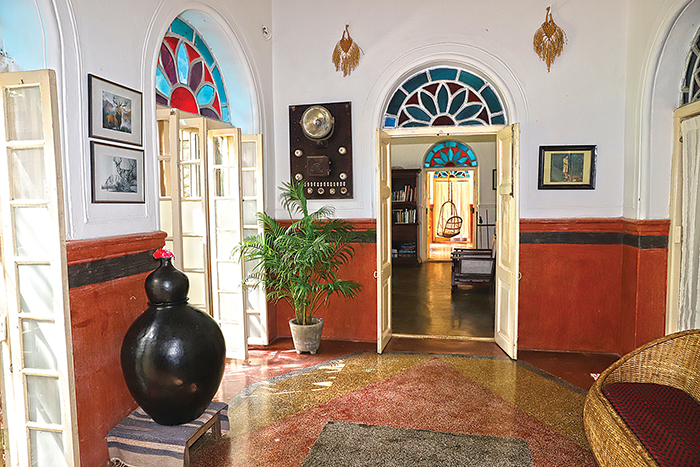
Standard : A